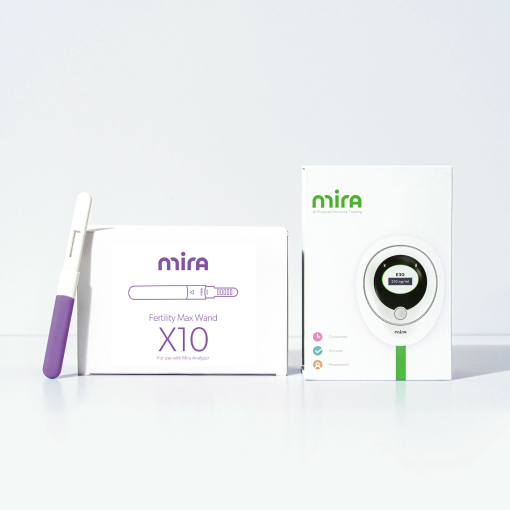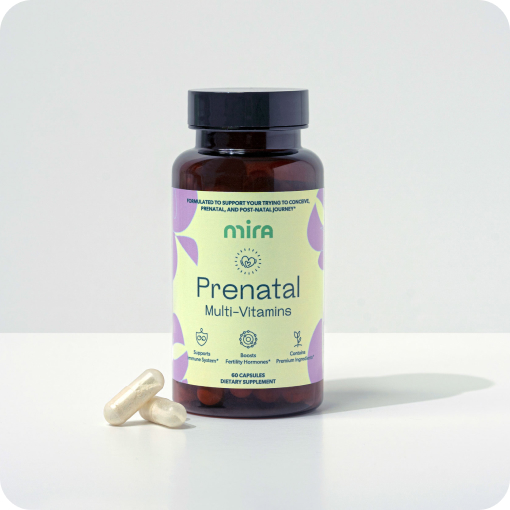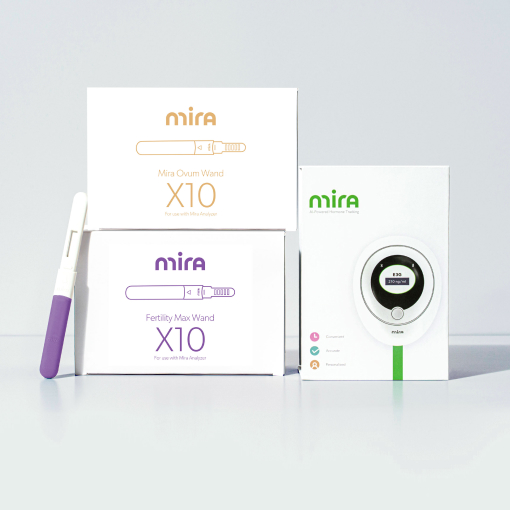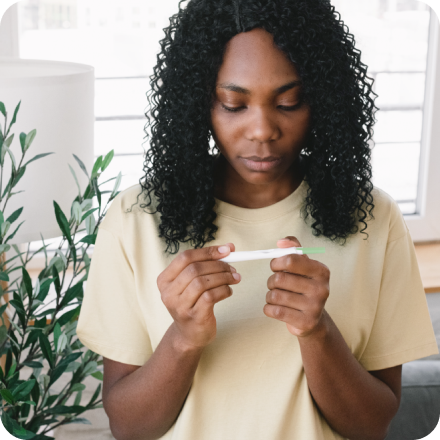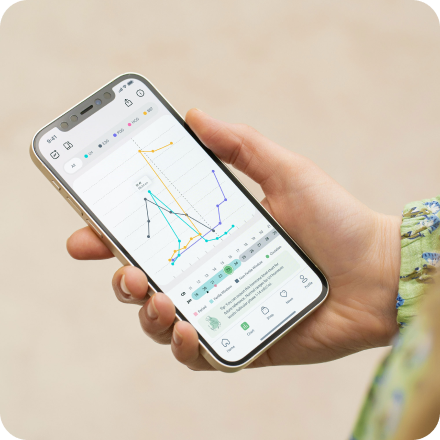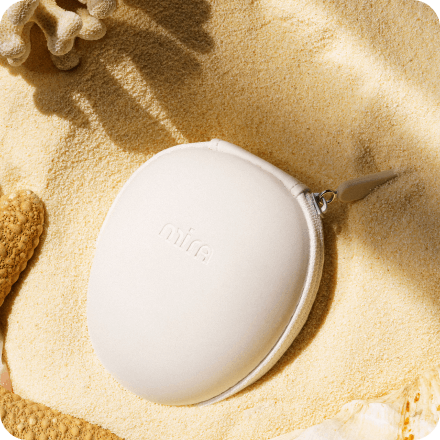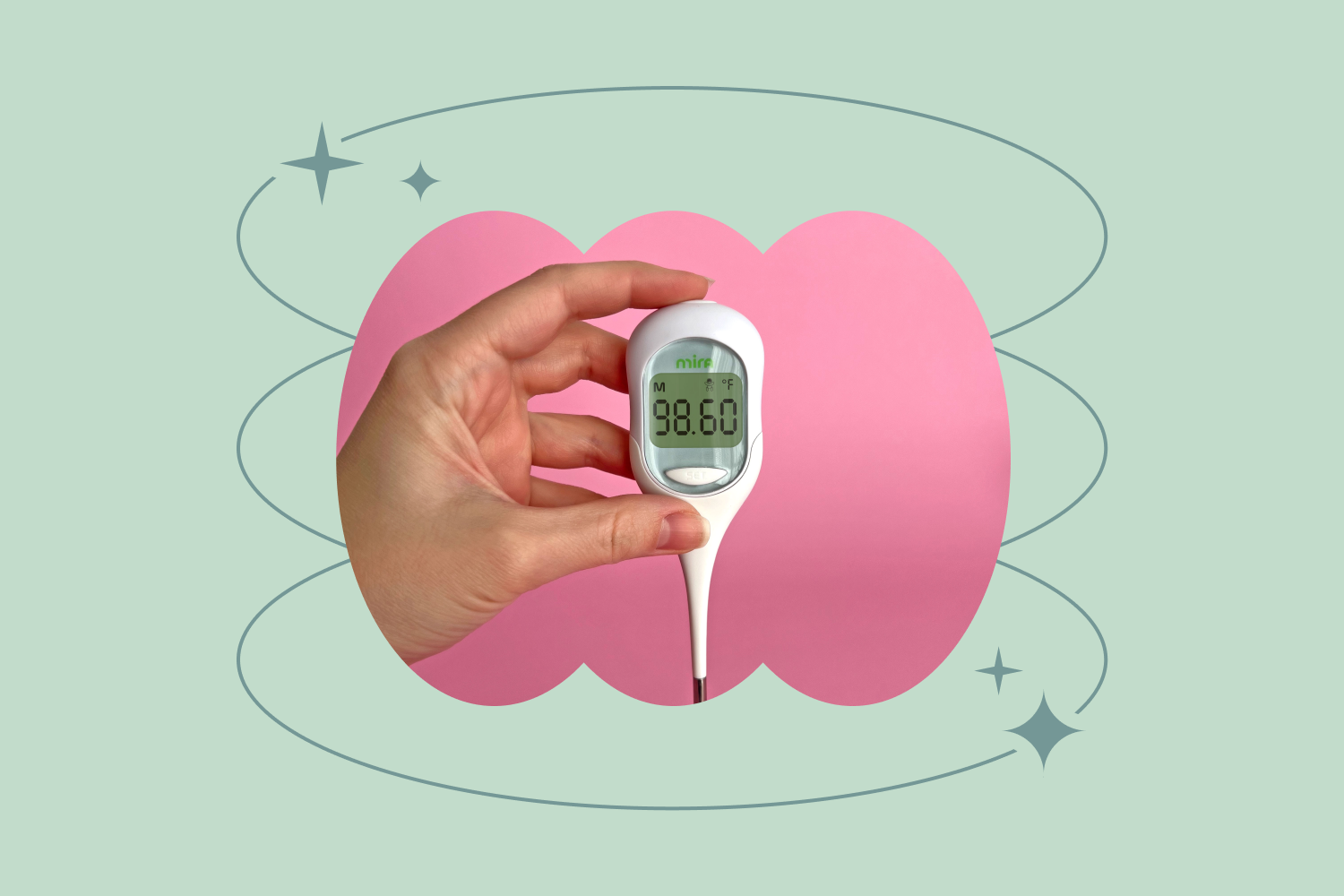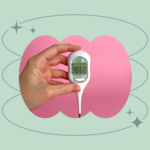Ovulation Bleeding: What Causes Spotting + Impact on TTC

Ovulation Bleeding: What Causes Spotting + Impact on TTC
Ever noticed bleeding and spotting in the middle of your cycle? You may be one of the few individuals who experience ovulation bleeding!
Read on to learn more about what ovulation spotting is, what’s going on inside your body, and how to identify it. We’ll also cover what it may mean for your fertility journey and when you may need to visit a doctor.
Let’s go!
What is ovulation spotting?
Ovulation spotting is minor bleeding that happens around the time of ovulation (when a mature egg is released from the ovaries). Ovulation typically occurs midway through each cycle, with some individuals experiencing ovulation spotting every cycle while others only experience it from time to time.
Unlike a period, ovulation spotting is light in volume and can be light pink, red, or dark brown in color depending on blood flow.
If you’ve never heard of ovulation spotting before – that’s okay! Spotting around ovulation is actually quite rare, with studies showing that only around 4.8% of women experience it.
3 ways to identify ovulation spotting
There are three tell-tale characteristics of ovulation spotting: timing of spotting, volume of discharge, and color of discharge.
Timing
To be considered ovulation spotting, it must occur around the time that you ovulate. For most individuals, this is midway through the menstrual cycle but timings can vary. If you’re not quite sure about how to estimate your day of ovulation, check out our handy ovulation calculator or explore these techniques for predicting ovulation.

Volume
Ovulation spotting will always be light in volume. Typically, there is just a few drops of noticeable discharge present for no more than two consecutive days.
Color
In terms of color, ovulation spotting can range from light pink to red and even dark brown.
How long does ovulation bleeding last?
Ovulation bleeding typically only lasts a day or two.
If bleeding lasts longer than two days, this is considered abnormal and you should speak with your doctor immediately. Abnormal vaginal bleeding may be a sign of something more serious such as infection, fibroids, polycystic ovary syndrome (PCOS), uterine polyps, or another health condition that may require immediate treatment.
What causes bleeding during ovulation?
The primary cause of bleeding during ovulation comes down to fluctuating hormone levels – more specifically, the drop in estrogen and rise in progesterone right after ovulation. This fluctuation is what triggers the release of an egg from the ovaries, and it may cause the inner lining of the uterus to shed – resulting in spotting. Some doctors refer to this as estrogen breakthrough bleeding.
Alongside spotting, it’s also common to experience light cramping, bloating, or a tingling sensation on one of the sides of the lower abdomen around ovulation. It’s possible for these symptoms to occur every cycle, only a few times, or not at all.
Spotting between periods: when is it normal?
Spotting between periods is considered normal if it occurs around the time of ovulation, only lasts for a day or two, and is light in volume.
However, if spotting is heavy and/or irregular, this could be an indicator of an underlying health concern related to fertility. For example, irregular bleeding is a common symptom among those with polycystic ovary syndrome (PCOS), ovarian cysts, thyroid disorders, and pelvic inflammatory disease (PID), to name a few. It could also be a sign of certain sexually transmitted infections (STIs).
If spotting occurs several days after ovulation, this is not considered a normal symptom of ovulation spotting. Instead, it could be a sign of an underlying health concern, or, it could be implantation bleeding which may indicate early pregnancy. If there is a chance that you could be pregnant, make sure to take a pregnancy test. The earliest you can test is on the first day of your missed period.
Recommended for you
Navigate your fertility with peace of mind
Can you prevent ovulation bleeding?
Ovulation bleeding is typically harmless and nothing to worry about. The only way to prevent it is by preventing ovulation, which is possible with the help of hormonal contraceptives. This is a straightforward solution if you are not trying to conceive – however, if you are trying to conceive, light ovulation bleeding is something that you may have to learn to live with. There are no quick fixes or lifestyle changes you can make to prevent ovulation spotting from occurring – it’s simply a natural part of your unique cycle.
Does bleeding during ovulation mean you’re pregnant?
Not necessarily. Ovulation spotting could just be your body’s response to fluctuating hormones during ovulation. Or, it could be implantation bleeding and a sign of early pregnancy if spotting occurs several days after ovulation. The only way to know for sure is by taking a pregnancy test on the first day of your missed period.
Ovulation spotting stories
“Alli_tx” from Reddit
Redditor “alli_tx” shared her experience in the subreddit r/TryingForABaby. Opening up to fellow Redditors, she explained that since having a D&C (dilation and curettage) after miscarriage, she now spots mid-cycle around her time of ovulation.
To ease her concerns, commenters reassured her that ovulation spotting is normal – even though it can seem to happen out of the blue. One commenter even shared that she personally “used to always spot with ovulation”, however, she doesn’t anymore now that she’s had a baby.
“GG” from NetMums
Another user on a NetMums forum shared that on day 12 of her cycle, she experienced ovulation pain accompanied by brown blood, which was out of the ordinary for her. Several people commented on this post, sharing that they too experience mid-cycle bleeding on occasion.
Tania Gonzalez from YouTube
In a video posted to her YouTube channel, Tania Gonzalez shared that since taking Femara, she began to notice her cycle decreasing from an average of 31-33 days to 28 days. Alongside this shortened cycle length, she also experienced brown, pink, and red discharge on days 18 and 19 of her cycle. This discharge also came with some light cramping and slight pain in her side.
Concerned, she reached out to her doctor who told her that her symptoms were completely normal and likely either a symptom of ovulation or a side effect of Femara.
FAQs about ovulation bleeding and spotting
How much bleeding is normal during ovulation?
Ovulation bleeding is considerably lighter than the average period. Although individual experiences can vary, one or two drops every few hours would be considered a “normal” amount of ovulation spotting.
Does spotting impact your ability to conceive?
No. Even though it is a rare symptom of ovulation, spotting is considered normal and does not impact your ability to conceive.
However, in cases where mid-cycle spotting and bleeding are caused by an underlying health condition, such as PCOS or endometriosis, the underlying health condition may negatively impact your ability to conceive.
If your mid-cycle spotting is heavy, lasts for more than two days, and is accompanied by pain, cramping, or difficulty with getting pregnant, it’s a good idea to speak with your doctor so that they can assess your situation and provide the appropriate treatment.
Is spotting during ovulation a good sign?
It depends. If spotting is due to fluctuating hormones around ovulation, it’s not necessarily a good or bad sign of a potential pregnancy.
However, spotting after ovulation can look very similar to implantation bleeding, which may be a good sign if you are trying to conceive (TTC). Only a third of pregnant women experience implantation bleeding in early pregnancy, so do not worry if you are TTC and have not experienced implantation bleeding.
What does ovulation spotting mean for fertility?
Ovulation spotting is neither good nor bad for fertility. If you are actively trying to conceive (TTC) and know that you tend to spot around ovulation, you can use this information to your advantage to plan sex with your partner.
However, if spotting begins to become heavier or more irregular, this could be a sign of an underlying health condition that could hinder your ability to get pregnant.
When should I speak to a doctor about ovulation spotting?
You should speak with your doctor if you are experiencing any of the following:
Mid-cycle bleeding lasting longer than two days
Irregular bleeding that is unrelated to your period
Bleeding that is heavier than normal
Bleeding that is accompanied by abdominal pain and heavy cramping
Your doctor will be able to assess your symptoms, ask the right questions, and recommend appropriate treatment options for your individual situation.
Take the Quiz!
Tell us your fertility goal and we'll give you a perfect product match
Mira’s Editorial Process
All content produced by Mira meets stringent editorial standards, ensuring excellence and accuracy in language and medical precision. Every piece undergoes thorough fact-checking and review by qualified professionals. Check out our full editorial process to learn more.


